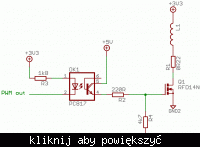edwinost
Newbie level 5
Hello,
I'm trying to control an old analog gauge using an PWM output. The gauge I use has slightly odd ratings, for a 100% reading it needs 5 Amps at about 1,3 Volt (it comes from an 60 year old railway locomotive).
The three top connectors on the gauge are used for internal light. The bottom 2 connectors are for the actual gauge.
My first thoughts were to use a MOSFET to switch the current using a 3,3 Volt and 24 Amps powersource (old PC powersupply). Is this the best way to go or are there better solutions.
Below are 2 pictures of the gauge:
**broken link removed**
**broken link removed**
Regards Edwin
I'm trying to control an old analog gauge using an PWM output. The gauge I use has slightly odd ratings, for a 100% reading it needs 5 Amps at about 1,3 Volt (it comes from an 60 year old railway locomotive).
The three top connectors on the gauge are used for internal light. The bottom 2 connectors are for the actual gauge.
My first thoughts were to use a MOSFET to switch the current using a 3,3 Volt and 24 Amps powersource (old PC powersupply). Is this the best way to go or are there better solutions.
Below are 2 pictures of the gauge:
**broken link removed**
**broken link removed**
Regards Edwin
